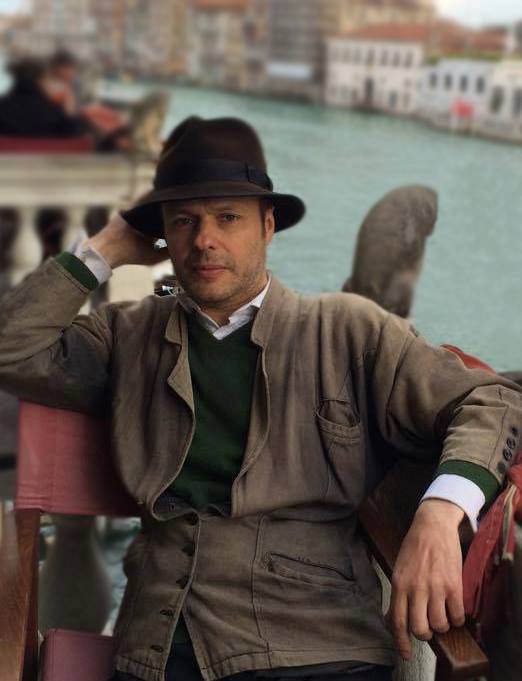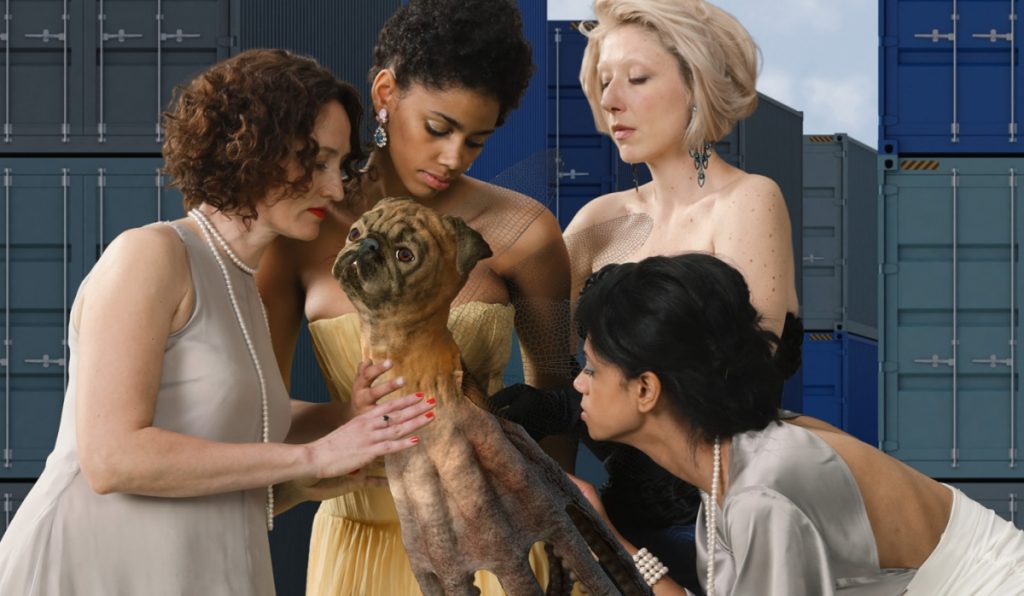“And yet, throughout the history of art, how few were those who found themselves capable of timeliness (and, therefore, of lastingness)! Such a list would have contained only a few names. And all the other would-be applicants – they are just a prey for the waters of Lethe into which they would slip off and sink into oblivion. Alas, almost everyone will slip off these gently sloping shores, no matter how one clings. For it is by the waters of Lethe, the waters of Oblivion, Venice, this glorious city of biennials, is washed.” – Gleb Smirnoff, “ARTODOXIA”

When museums and exhibitions are closed for the public and magazines publish Top Ten Socially Distant Designs, books on art become contemporary art events. Irina Vernichenko from Artdecision.eu presents “ARTODOXIA” by an art expert and philosopher Gleb Smirnoff. Gleb Smirnoff based in Venice, Italy, writes about language, contempory art criteria and contingentia:
«Humanity does not have a history more pleasant than that of art because it is a history of immortalities. Shiller rightly pronounced: “Die Kunst, o Mensch, hast du allein!”: “The art, oh men, is yours alone!”
The artist is befuddled by the passing of time, by its lack of form and its disappearance into nothing, its chronic reduction, – the artist is the one for whom the passing of time is clearly audible.
Hence, time is fixated and focused upon in art. It turns out that the artist’s task is to put forward proposals to design time and to pick out relevant linguistic articulations, synchronized with it. Art is the visual flow of time, which is casted in the creations of the human genius. Being professionally intrigued by the flow of Time, the artist, homo suspens – is the one who hears it, feels it with skin, and thus is able to “express” it in this or that language.
Art is in fact a collective search to please Chronos (also known as Zeitgeist, the spirit of time) by materializing him. These are the foundations upon which the mystical excitement in our gambling art-game is built. Here, everyone collaborates rather than competes with one another. Some do so knowingly, some instinctively, however all are motivated by their ambition to create a thing, which will be set up to the history of art and remained as a part of that era – an imprint of that moment.
The overwhelming majority of those willing are weeded out. But the lucky one who manages to correctly guess, and “capture” time takes it all: money, name, fame, fate, myth – anything he asks for. Whoever can make time tangible is greatly rewarded by it.
Chronos hungrily gazes upon such historic events as the Biennale, every two years Venice becomes the “capital of time” for the whole summer. Taking part in the Biennale can be treated as a lucky occurrence, not because it increases prices, but because it is an occasion for the artist to light up where the flow of time reaches a high intensity.
The overwhelming majority of exhibits which we have to see are attributed to the category of things about which only this can be said: “nothing would change if they were not there”. In classic metaphysics, this is known through a capacious word contingentia: non-persistent, random, uncorroborated, unnecessary introduction into being. This is something that one can go without. Instead, we all wait for the work to prove its right to be born, we expect a huge and immutable Must -be. I propose that henceforth that this art should be called “opportune”, instead of the indistinctly irresponsible “contemporary”.

CRITERIA
Immortal art, this is a territory of lifetime heaven, as well as of post-mortal existence. However, every paradise requires certain admission criteria and does not grant entry to every soul. What are the admission criteria? The fundamental criterion coincides with solving the question: and were you, human, an artist in life? And if you were, did you or did you not falsely testify against art?
Like sometime in the 15 th century, in our time the art world stands on the precipice of a new revolution in visual expression, before the face of which traditional films, and now more than ever, every type of painting needs to retreat respectfully from the front line. It is standing on the doorstep of a revolution, equal to the discovery by the Flemish of oil painting. Hence, then in Quattrocento, the first step was made in the progressive conquest of virtual reality (“as if he is alive! – exclaimed Vasari, looking at St. Francis who was visualized by the hand of Pontormo – it seems that he is breathing…”). the conquest, which resulted in “Avatar”, “Beowulf”, “Hugo”, and “Sucker Punch”, and this has not even approached its eventual culmination.

Digital graphics and painting have enough potential to allow one to master the three measurements. Maybe here lies the solo beauty of the circumstance that we live during the century of digital technology, tri-dimensional technology, nanotechnology, and cyberspace. At least artists are hugely fortunate as a result. Technology allows us to enter an unreal thicket for promising new wanderings. One can encounter the happiness of experiencing the three measurements in this territory, as well as fully entering the “illusionary plane”, knead the picture on the movement and multiple perspectives, acoustic, and stereoscopical effects, invent his and exclusively his rules of the game – basically, model a dizzyingly-unprecedented, hypnotic world. The vector of search of a new language unequivocally trends to the side of liquid crystal: the fresh infantilely barbaric blood pulsates in it.
To distance yourself from accidental epigones, the artist should make himself go through the effort to find out “what was happening before my time” by allotting time for studying art history: “become a master in your art – si diventi in questa arte dotto“, as the great Leon-Battista Alberti advised in 1435.
Secondly (and this is another guaranteed method not to goof) – bet on new technologies. Yesterday they were simply not in stock, and through this singular circumstance, they guarantee the formal unbrokenness. Moreover, a new tool can by itself guide the artist by hinting at the correct artistic tactic and by whispering him a new language. This entails the language of accidental effects and a swift perception of it by the spectator, without the hints of textual annotation and inclusive instructions. The thing needs to be able to stand out on its own, not as an illustration of a concept. The content would undoubtedly be an unescapable side effect of form.
If it is indeed new.»

